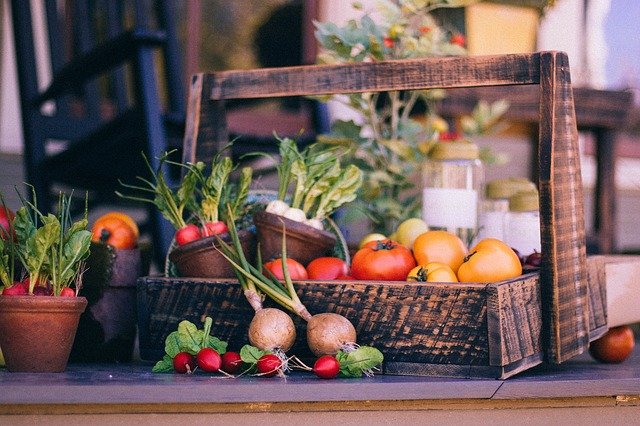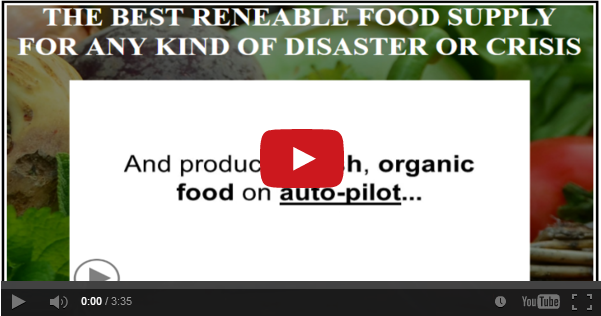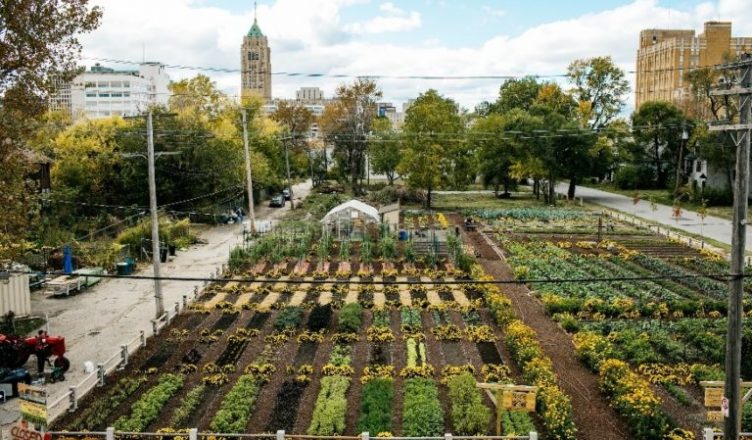Looking back at past history, recent and far removed, can help prepare us in all parts of life. In some cases, early conventional wisdom stands the test of time. Others prevent us from repeating mistakes of the past.
I’m looking at the wartime Victory Garden programs here, but not at food production. An awful lot of the advice applies across the board, both in daily life and as preppers, and definitely, should we find ourselves in times of hardship, personal or widespread.

Succession Cropping for Victory Garden Success
Succession Cropping wasn’t new for WWI and WWII, but it was – and is – one of those things that gets a little less focus. It’s when you plan for staggered harvests and have fast-growing seed or transplants ready to plug into rows or beds as soon as something else comes out.
(In the growing world, it’s given steroids with inter-planting and under-seeding, planting one thing around another before it’s out of the ground – like radish and lettuces that go in around corn and peppers, to be harvested before the larger plants need their space, or seeding peas or cabbage around tomatoes before those even start yellowing.)
Ignoring the charmingly non-PC advice of many VG guides, preppers want to get the most out of everything. They’re focused on growing space, but it also applies to the time, labor, and money we put into preparedness.
That one’s universally applicable just from the mindset of looking well down the road and making a real plan.
Budgeting in time, labor, money and tools with a realistic tally of total cost and returns as well as the anticipated lifespan of any project or purchase helps us prioritize. It also lets us plan for its replacement instead of getting caught unawares and rushing to come up with something (the equivalent of empty, wasted spots in our rows).
We also check the box by trying to source multi-function items, making the most out of the space and money they’ll require (keeping our row space in production).
We can also apply the similar mentality of being creative in how and when we decided something is no longer useful, and being flexible and adaptable to the possible uses the things around us can have.
It’s not a new concept. “Make it do” is as old as those WWI and WWII garden programs. Many of us grew up with and continue to hear “reuse it-recycle it”.
With some Internet searching, we can find a DIY or up-cycles for pretty much any interest, and tips for getting the most life humanly possible out of all our belongings.
Don’t go overboard
Usually when we hear about Victory Gardens, it’s a ministry or department entreating everyone to do everything possible. And yet, most guides, even in simplest form, included some form of the warning – “Don’t Overextend Yourself”.
“Don’t Over-Seed” and “Don’t Crowd Plants” were also common warnings – warnings that persist today, right there with “failure to thin plants” being one of the common reasons for garden failure and low yields.
They’re possibly the most universally applicable pieces of advice ever issued.
As the VG guides tell us, we have to account for the time something is actually going to take, and honestly weigh whether we can/will devote that time. When we take on more than we can handle, and-or set unrealistic goals, we’re setting ourselves up for failure.
It’s tempting to empty both barrels and to go hard charging into preparedness. Even experienced preppers sometimes cave to the monkey on our back. However, things turn out better pretty much universally when we apply some moderation and maintain diversity.
We have to find a balance between sanity-saving activities, unscheduled downtime, and work/labor. Otherwise eventually we drop a ball, end up frayed, or burn out.
Stepping away from the garden examples (which would be companion planting or SFG’s), it’s the balanced recipes – and lives – that are healthiest, that make the most out of what we have and prepare us best for the future.
Many of us do have some “fat” that can be trimmed from our lives – literally and physically, as well as our internet, TV, and other time and money sucks. We want to get to the meat of things, and we want to be prepared, but remember that other old adage: “fat is where the flavor is”.

Take a step back, and evaluate honestly.
Otherwise, we wind up being wasteful, just like the wasted seeds, fertilizer, tool purchases, and time invested in a Victory Garden that ends up neglected, choked with weeds, and overcrowded.
If we’re buying preparedness items on credit, or we carry significant credit debt, it’s wasteful to continue to buy past the duration’s of most-likely events instead of cutting that debt so we can apply the interest payments and principle to getting financially fit, extending our physical preparedness later.
It’s wasteful to get an expensive rifle, then not be able to afford the time and money for ammo and training, for basic accessories like a light and sling.
It’s also wasteful to get an inexpensive gun that’s expensive to feed, or such a beast to carry or such a shoulder thumper that we’re not going to practice enough to develop the needed muscle memory.
It’s wasteful to get the hot-ticket pistol or battle rifle, and only 1-2 magazines because they’re model and manufacturer-specific, $30+ a pop, and we can’t justify more with our budget.
It’s wasteful, period, to get a $500 gun when a $150-$300 gun checks all the same blocks.
In some cases, inability to replace something does increase its worthiness for our attention. However, an awful lot of the time, we overextend ourselves in one direction, or we focus on the furthest bar, letting everything in between slide.
Then when real daily life happens (flat tire at 2 a.m., overheating engine in rush hour, 10-20 day midwinter power outage just in our neighborhood with no water, uninsured floods, under-insured fires, job loss, spouse/child requires care, death/disability of a breadwinner or major pantry contributor), we’re sitting on NBC gear, a surgical suite, AKs and G19s, and 12 logging axes for the 7 elms on our street. They do us no good.
We can apply the VG “moderation” advice and realistic self-assessment parameters to pretty much everything on our lists, supplies or skills.
Weigh value points when planning
During the war garden eras, rationing was in effect. There were coupon or chit systems, sometimes hard constants, and availability systems, not unlike the fuel rationing Baby Boomers will remember, the Cuban oil crisis, and today’s WIC program.
In war gardens, it meant producing things that would be least available in stores. Saving the points on something they could produce also sometimes meant saving points to apply elsewhere.
Both of aspects of value apply across the board.
We have to take advice about value with a grain of salt, though, because what’s valuable where, and specifically to us, will change.
A Northern Canadian trying to grow grain corn during WWII, or a Deep South American trying to keep salads and beets going through the summer … just not such a hot idea. There are usually workarounds. The Canadian could plant Norwegian rye and barley, and the Southerner can plant green beans. They’re not the same things, though, and there’s commonly a trade off (in this case, post-harvest processing time and labor).
It affects what’s most efficient and reasonable for us to store instead of produce, as well as what’s most efficient and effective for us to spend our time on.
That extends to our work, and our off-time hobbies, pastimes, tasks, training, and skills.
DIY’ing isn’t always practical, for many situationally dependent reasons. Just paying for somebody else’s mousetrap can save time and money sometimes. Sometimes, budgeting for “stuff” instead of “skills” is a better option – pretty universally, person to person, or for right now.
Some basic skills will serve us well, almost regardless, whether we ever see a long-term job loss or widespread crisis, find ourselves surviving in the woods, or not. On the other hand, until we have some basics covered, some other facet of preparedness likely has greater value.
We have to factor specific value, person to person, to best meet our short-term and long-term goals.
What’s past is prologue
Our evolving societies and technologies mean that particular adage hasn’t aged quite as well as some of the Victory Garden advice. It doesn’t hold true universally, but it hasn’t been totally overturned, either.
History is one of the best places to look for the challenges we’ve faced, both as a species and as nations. It also offers us solutions to most of those challenges.
The guides and practices developed for war gardens in both world wars and from all nations involved have enormous applications for preppers, both actually digging in the dirt and garden yields, and the lessons we can apply elsewhere.
So do the hardships overcome throughout that entire era.
The actions of Britain’s Ministry of Ag alone and the ways British farmers, urbanites and burgeoning ‘burb dwellers handled them – and got around them – make a great study.
There are also big takeaways from what livestock were “allowed”, and how small-space homeowners and farmers maintained their much-reduced livestock and brought some of our now-rare heritage breeds through the tough times, especially in this modern age of reliance on bagged feed and the small property sizes available to many preppers.
It’s particularly beneficial to those who expect any kind of personal disaster or worldwide crisis from the perspectives of what was pushed as the most-efficient and most-needed crops, and how long the shortages lasted – following not only the first world war, but also the second.

Some of the other local, civilian, and federal wartime programs are worth researching and possibly planning for (or planning to evade) if we’re preparing for widespread disasters on scales that range from Venezuela, Argentina, Cuba’s oil crisis, and another Great Depression, to the even greater nation- and world-shaking pandemics, wars/takeovers, or natural disaster possibilities.
Thanks to evolution and modern tech, those lessons from history are waiting at our fingertips and under our thumbs.
source : R.Ann Paris



